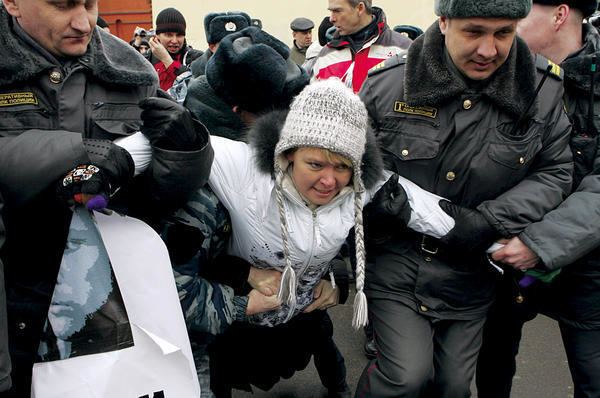Founded 1939 | Population 207,425 (2010) Mayor Oleg Shakhov | |
 | ||
Map of Khimki
Khimki (Russian: Химки; [ˈxʲimkʲɪ]) is a city in Moscow Oblast, Russia, 19 kilometres northwest of central Moscow. Khimki is asserted by many as the nearest point German forces reached in their advance on Moscow in World War II.
Contents
- Map of Khimki
- Highlights real madridbc khimki moscow region
- Defenders of khimki forest have not given up
- Origins and formation
- Khimki in the Battle of Moscow
- Post war
- Population
- Administrative and municipal status
- Economy
- Transport
- Sport
- Divided city
- Twin towns and sister cities
- References

Highlights real madridbc khimki moscow region
Defenders of khimki forest have not given up
Origins and formation

Khimki was initially a railway station that existed since 1850 on the Moscow – Saint Petersburg Railway. The Moskva-Volga Canal was constructed between 1932 and 1937 on which Khimki lies on the west bank. Khimki was then officially founded in 1939.
Khimki in the Battle of Moscow
The German attack starting the Battle of Moscow (code-named ‘Operation Typhoon’) began on 2 October 1941. The attack on a broad front brought German forces to occupy the village of Krasnaya Polyana (now in the town of Lobnya) to Moscow's North West. Krasnaya Polyana was taken on 30 November.
Many sources state that at least one German army patrol visited Khimki. Similarly many sources state this as the closest point the Germans reached to Moscow (Khimki at the time was five miles from the edge of Moscow). Among the sources stating the Germans visited Khimki the details of the date and unit involved are inconsistent and disputed. One story of events asserts a skirmish took place in Khimki on 16 October at the Leningradskoe Shosse bridge involving a German motorcycle unit. Another account is a patrol reached Khimki around 30 November or early December before returning to its main unit without combat. The dates mentioned for this second account vary. A myth surrounding this is that the Germans would have been able to see the Kremlin in the distance from Khimki.
The Soviet Army counter offensive for "removing the immediate threat to Moscow" started on 5 December on the North-Western Front (the area around Khimki North West of Moscow). The South-Western Front and Western Fronts began their offensives on 6 December. The German forces were driven back. Moscow was never under such close land threat again during the war.
A memorial in the form of a giant tank trap is located at the "Kilometer 23" point 55°54′46.103″N 37°24′10.577″E) of Leningradskoye Highway (the highway to St. Petersburg). The memorial is one mile south east of Planernaya Railway Station. The memorial was unveiled on 6 December 1966 as a 25th anniversary recognition of the launch of the Soviet counter offensive. This location is just short of an intersection with the Moscow-St Petersburg railway (close to where the IKEA shopping centre has since been built). This memorial and shopping centre on the Northern side of Khimki has a direct distance of 22 kilometres from Moscow city centre. At the time of the conflict this location was outside Khimki. This memorial is different to the Khimki War Memorial moved in 2007 to in Novoluzhinskoe cemetery.
Post war
Khimki was home to several Soviet aerospace defense development centers that became the principal employers for the majority of the city population. This included R&D enterprises which designed surface-to-air missiles for S-75, S-125, S-200, S-300 Soviet air defense systems, engines for intercontinental ballistic missiles and satellite launch vehicles, and other types of equipment. For this reason, Khimki was off limits for all foreigners visiting the country, despite its location on a highway between Moscow and its major international airport.
In 2010 the city saw protests over the construction of the new Moscow–Saint Petersburg motorway through the Khimki Forest.
Currently, the city of Khimki is directly adjacent to the territory of the city of Moscow. In recent years the population of the city of Khimki has continued to grow rapidly due to massive residential building construction driven by its proximity to the densely populated Moscow megapolis, which needs new areas for expansion.
Population
Population: 207,425 (2010 Census); 141,000 (2002 Census); 132,902 (1989 Census); 106,000 (1977); 23,000 (1939).
Administrative and municipal status
Within the framework of administrative divisions, it is incorporated as Khimki City Under Oblast Jurisdiction—an administrative unit with the status equal to that of the districts. As a municipal division, Khimki City Under Oblast Jurisdiction is incorporated as Khimki Urban Okrug.
Economy
The city enjoys a great deal of commercial activity due to its location between Moscow and one of its main airports, Sheremetyevo.
As of 2015 some aerospace-development centers located in Khimki contribute to a program of the International Space Station. Former Soviet aerospace and defense development centers located in Khimki:
Khimki hosts one of the largest shopping malls in Russia, which features French chain-store Auchan and Swedish furniture-retailer IKEA.
Transport
Khimki station is on the Moscow-St Petersburg Railway.
Road transport includes bus and trolleybus.
Sport
Divided city
Khimki
Twin towns and sister cities
Khimki is twinned with:
